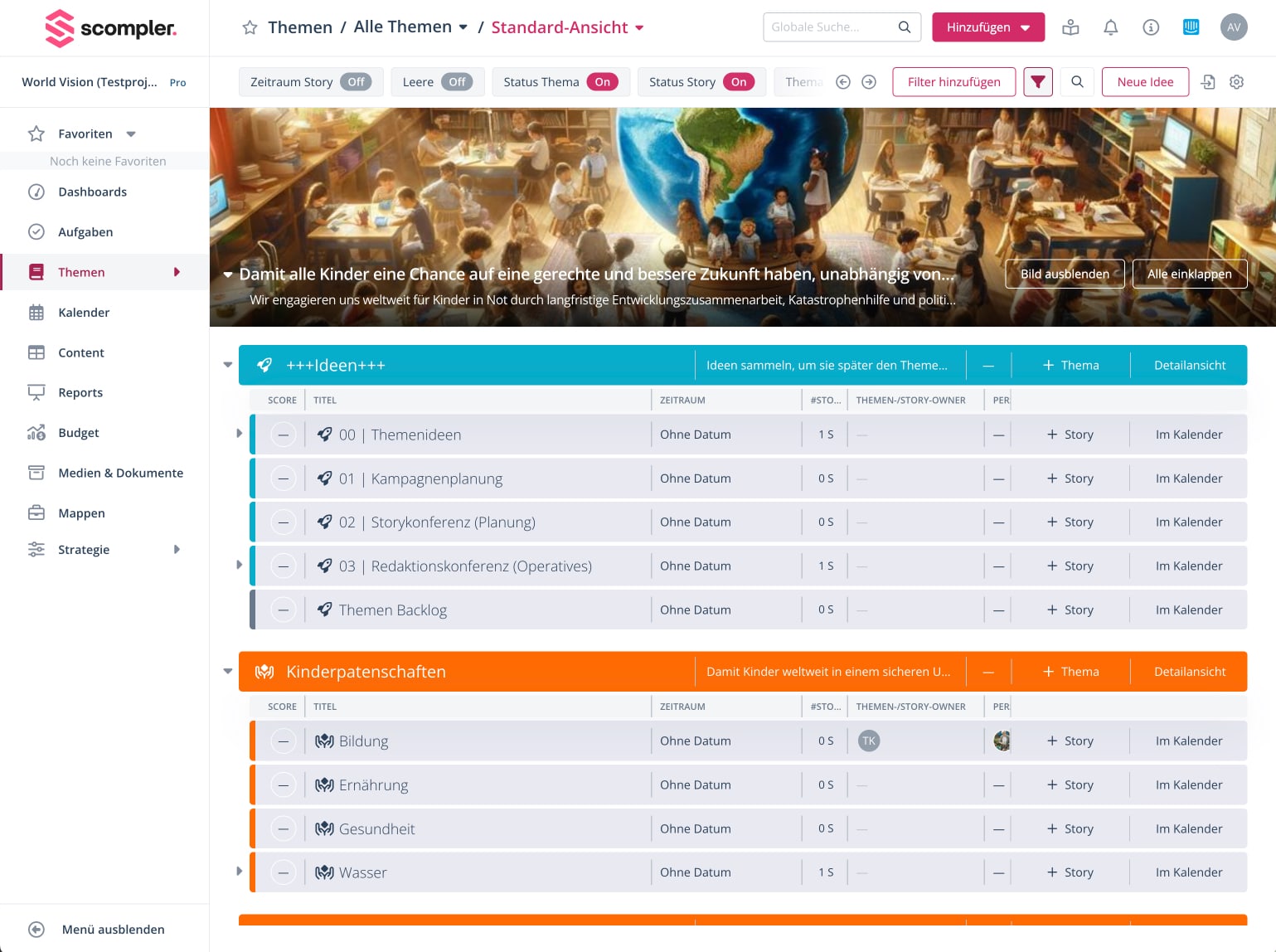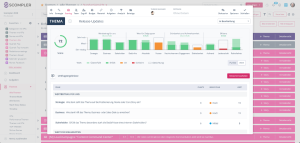Collaboration tools in the context of New Work
Advantages of the collaboration tools
The introduction of team collaboration tools goes hand in hand with the principles of New Work and the increasing spread of remote working. These tools enable teams to work together efficiently regardless of their physical location. They offer flexibility, promote transparency and facilitate communication and collaboration in distributed teams. In the course of digitalization, collaboration software promotes teamwork and team spirit within the company.
Improved communication: real-time chats, video calls and joint document editing significantly improve internal communication.
Increased productivity: Productivity is increased through clear task distribution and simple tracking of progress.
Flexibility: Teams can work from anywhere and still collaborate seamlessly.
Transparency: All team members have access to the same information and can follow the progress of the project live.
Challenges and opportunities
Despite their many advantages, collaboration tools also present challenges:
Technological hurdles: Not all team members are equally tech-savvy, which requires training and adaptation time.
Overload due to tools: Too many tools can lead to information overload and confusion. A clear structure and targeted selection are therefore crucial.
On the other hand, these tools offer enormous opportunities:
Innovative ways of working: New processes and working methods can be implemented that would not be possible without these tools.
AI integration: The increasing integration of artificial intelligence (AI) opens up further possibilities, such as automated tasks, intelligent analyses and personalized recommendations.
Definition of
What are collaboration tools?
Collaboration tools are software solutions that facilitate collaboration and communication between team members in a company.
They offer a variety of functions that enable users to work together on projects, share documents and communicate with each other, supporting collaboration and knowledge sharing, especially in times of remote work and digital networking.
Collaboration tools are indispensable aids to enable effective and efficient teamwork.
Online collaboration tools for remote teams
Online collaboration tools have become an indispensable part of remote working. They offer a variety of functions and options that enable teams to work together more efficiently and effectively. These include the ability to work from anywhere, improved communication and the management of projects and data.

Collaboration tools in the context of New Work
Advantages of the collaboration tools
The introduction of team collaboration tools goes hand in hand with the principles of New Work and the increasing spread of remote working. These tools enable teams to work together efficiently regardless of their physical location. They offer flexibility, promote transparency and facilitate communication and collaboration in distributed teams. In the course of digitalization, collaboration software promotes teamwork and team spirit within the company.
Improved communication: real-time chats, video calls and joint document editing significantly improve internal communication.
Increased productivity: Productivity is increased through clear task distribution and simple tracking of progress.
Flexibility: Teams can work from anywhere and still collaborate seamlessly.
Transparency: All team members have access to the same information and can follow the progress of the project live.
Challenges and opportunities
Despite their many advantages, collaboration tools also present challenges:
Technological hurdles: Not all team members are equally tech-savvy, which requires training and adaptation time.
Overload due to tools: Too many tools can lead to information overload and confusion. A clear structure and targeted selection are therefore crucial.
On the other hand, these tools offer enormous opportunities:
Innovative ways of working: New processes and working methods can be implemented that would not be possible without these tools.
AI integration: The increasing integration of artificial intelligence (AI) opens up further possibilities, such as automated tasks, intelligent analyses and personalized recommendations.












